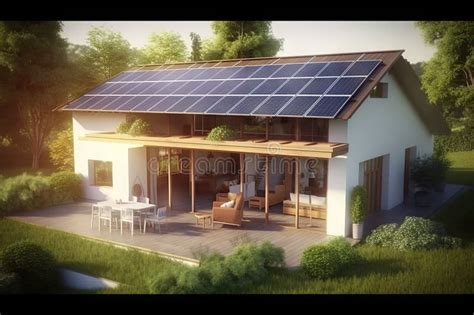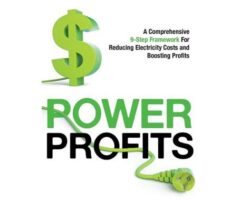Understanding Solar Power: A Renewable Energy Source
Solar power is a renewable energy source that has gained significant popularity in recent years. With the increasing concerns about climate change and the need to reduce greenhouse gas emissions, many people are turning to solar power as a clean and sustainable alternative to traditional energy sources. Solar power harnesses the energy of the sun and converts it into electricity that can be used to power homes, businesses, and even entire cities.
One of the primary benefits of solar power is its environmental friendliness. Unlike fossil fuels, which release harmful pollutants into the atmosphere when burned, solar energy produces no emissions and has a minimal impact on the environment. By relying on solar power, we can reduce our dependence on fossil fuels and decrease our carbon footprint, helping to mitigate the effects of climate change and create a more sustainable future.
Another advantage of solar power is its potential for long-term cost savings. While the initial investment in solar panels and installation may be high, the ongoing cost of harnessing solar energy is relatively low. Once installed, solar panels require minimal maintenance and can produce electricity for decades. Additionally, many governments and utility companies offer financial incentives, such as tax credits and rebates, to encourage the adoption of solar power, making it even more affordable for homeowners.
Furthermore, solar power systems are composed of several key components. The most crucial component is the solar panel, which consists of photovoltaic cells that convert sunlight into direct current (DC) electricity. Inverter units are then used to convert DC electricity into alternating current (AC) electricity, which is suitable for use in homes and businesses. Lastly, the energy generated by the solar panels is stored in batteries for use during times when sunlight is not available or during power outages.
- Understanding Solar Power: A Renewable Energy Source
- Benefits of Solar Power for Eco-Friendly Homes
- The Main Components of a Solar Power System
- Choosing the Right Solar Panels for Your Home
- Maximizing Solar Power Efficiency in Your Home
- Storing Solar Energy: Exploring Battery Options
- The Role of Solar Power in Reducing Carbon Footprint
- Financial Incentives for Installing Solar Power Systems
| Title | Description |
|---|---|
| Understanding Solar Power: A Renewable Energy Source | Explores the concept of solar power as a renewable energy source and its importance in reducing greenhouse gas emissions. |
Benefits of Solar Power for Eco-Friendly Homes
Solar power is becoming an increasingly popular option for homeowners looking to reduce their carbon footprint and save money on their energy bills. By harnessing the power of the sun, homeowners can generate clean, renewable energy right in their own homes. There are numerous benefits of solar power for eco-friendly homes, making it a wise investment for those looking to live a more sustainable and environmentally conscious lifestyle.
One of the primary benefits of solar power for eco-friendly homes is the reduction in greenhouse gas emissions. Traditional electricity production relies on fossil fuels, which release harmful pollutants into the atmosphere, contributing to climate change. Solar power, on the other hand, generates electricity without emitting any greenhouse gases. By switching to solar power, homeowners can significantly reduce their carbon footprint and help combat climate change.
Another major benefit of solar power for eco-friendly homes is the potential for energy cost savings. While the initial investment in solar panels may seem expensive, over time, homeowners can recoup their investment through reduced electricity bills. Solar power systems can generate a significant amount of electricity, which can be used to power appliances, lighting, and HVAC systems. By relying less on grid-based electricity, homeowners can see substantial savings on their monthly energy bills.
- Solar power reduces greenhouse gas emissions.
- Switching to solar can result in significant energy cost savings.
- Solar power systems require minimal maintenance.
- Solar power increases the value of eco-friendly homes.
In addition to the environmental and financial benefits, solar power systems also require minimal maintenance. Once installed, solar panels generally only need to be cleaned periodically to ensure optimal performance. Many solar panel manufacturers also offer warranties, providing homeowners with peace of mind knowing any potential issues will be resolved.
Furthermore, incorporating solar power into an eco-friendly home can increase its overall value. As sustainability becomes a more prominent factor in the real estate market, homes equipped with solar power systems are in high demand. Potential buyers are increasingly seeking out energy-efficient and eco-friendly properties, making solar power an attractive selling point.
| Benefits of Solar Power for Eco-Friendly Homes |
|---|
| Reduces greenhouse gas emissions |
| Significant energy cost savings |
| Low maintenance requirements |
| Increases home value |
In conclusion, the benefits of solar power for eco-friendly homes are undeniable. From reducing greenhouse gas emissions to providing significant cost savings, solar power is an excellent investment for homeowners looking to make a positive impact on the environment while also reaping financial rewards. Additionally, the low maintenance requirements and increased home value further solidify solar power as a smart choice for eco-conscious individuals. Embracing solar power is not only beneficial for the present but also for future generations, as we strive towards a more sustainable and cleaner energy future.
The Main Components of a Solar Power System
Solar power is a renewable energy source that is gaining popularity around the world. It is a sustainable and clean source of energy that harnesses the sun’s power to generate electricity. In order to understand how solar power works, it is important to be familiar with the main components of a solar power system.
1. Solar Panels: Solar panels are the most recognizable component of a solar power system. These panels are made up of photovoltaic cells that convert sunlight into direct current (DC) electricity. The number of solar panels required for a system depends on factors such as energy consumption and the amount of sunlight available.
2. Inverter: The inverter is an essential component of a solar power system as it converts the DC electricity produced by the solar panels into alternating current (AC) electricity that is used to power homes and businesses. Inverters also help optimize the performance of the solar power system.
3. Batteries: While not necessary for all solar power systems, batteries are used to store excess electricity generated by the solar panels. This stored energy can be used during times when there is low sunlight or during power outages. Batteries can help maximize the self-consumption of solar power and reduce reliance on the electrical grid.
4. Meter: A meter is used to measure the amount of electricity generated by the solar power system. It helps determine the energy production and consumption, allowing users to monitor their energy usage and potential savings. Net metering is a common practice where excess electricity can be fed back into the grid, resulting in credits or reduced electricity bills.
5. Mounting System: Solar panels need to be mounted securely on rooftops or on the ground to ensure optimal performance. The mounting system includes brackets, rails, and other hardware that hold the panels in place. Proper installation and positioning of the panels are crucial for maximizing energy production.
By understanding the main components of a solar power system, you can make informed decisions when it comes to choosing, installing, and maintaining your own solar power system. Each component plays a vital role in generating clean energy and reducing dependence on fossil fuels. Solar power systems offer numerous benefits for both the environment and homeowners, making them an attractive choice for those looking to embrace renewable energy sources.
Choosing the Right Solar Panels for Your Home
Solar panels are an essential component of a solar power system, converting sunlight into usable electricity. When it comes to choosing the right solar panels for your home, there are several factors to consider. These include efficiency, durability, cost, and the specific needs of your home. By understanding these factors and conducting thorough research, you can make an informed decision that will maximize the benefits of solar power for your home.
Efficiency is a crucial factor when selecting solar panels. It refers to the amount of sunlight that the panels can convert into electricity. The higher the efficiency, the more electricity the panels can produce. This is important because it determines how much power your home can generate and how many panels you will need. High-efficiency panels are more expensive, but they can be a good long-term investment as they generate more electricity over their lifespan.
Another important consideration is durability. Solar panels are exposed to various weather conditions, so they need to be able to withstand the elements. Look for panels that are made of high-quality materials and have a strong frame that can resist impacts and wind loads. Additionally, consider the warranty offered by the manufacturer. A longer warranty period indicates that the panels are built to last and the manufacturer has confidence in their quality.
Cost is a significant factor for most homeowners. While it is important to find solar panels within your budget, it is equally important to ensure that the panels are of good quality and will provide reliable performance. It’s a good idea to compare prices from different suppliers and take into account the efficiency and durability of the panels. Remember, investing in higher-quality panels may save you money in the long run by providing greater energy savings and requiring less maintenance.
Finally, consider the specific needs of your home when choosing solar panels. Assess your energy consumption and determine how much electricity you need your solar power system to generate. This will help you determine the size and number of panels you require. Additionally, consider the available space on your roof or property where the panels will be installed. If space is limited, you may need to opt for higher-efficiency panels or consider alternative mounting options such as ground-mounted systems or solar carports.
In conclusion, choosing the right solar panels for your home involves considering factors such as efficiency, durability, cost, and the specific needs of your home. By taking these factors into account and conducting thorough research, you can make an informed decision that will maximize the benefits of solar power for your home. Remember, solar panels are a long-term investment that can significantly reduce your carbon footprint and provide energy savings for years to come.
Maximizing Solar Power Efficiency in Your Home
Solar power is a renewable energy source that utilizes sunlight to generate electricity. It is becoming increasingly popular among homeowners who are seeking a more sustainable and cost-effective energy solution. By harnessing the power of the sun, homeowners can reduce their carbon footprint and lower their electricity bills. However, to fully benefit from solar power, it is important to maximize its efficiency in your home.
One key component for maximizing solar power efficiency is the use of high-quality solar panels. When choosing solar panels for your home, it is important to consider factors such as efficiency rating, durability, and warranties. Look for panels that have a high efficiency rating, as this indicates that they can convert a greater amount of sunlight into electricity. Additionally, opt for panels that come with a long warranty period to ensure that you get the most out of your investment.
Another way to maximize solar power efficiency is through the proper placement and orientation of the solar panels. Ideally, solar panels should be installed in a location that receives maximum sunlight throughout the day. This usually means facing them towards the south in the Northern Hemisphere and towards the north in the Southern Hemisphere. Additionally, it is important to regularly clean the panels to remove any dirt or debris that may hinder their efficiency.
| Main Components of a Solar Power System | |
|---|---|
| Solar panels | Convert sunlight into electricity |
| Inverter | Converts DC electricity from the panels into AC electricity for household use |
| Battery storage (optional) | Stores excess electricity generated by the panels for later use |
| Meter | Measures the electricity generated by the panels and consumed by the household |
In addition to optimizing the solar panels themselves, it is important to consider the other components of a solar power system. These include the inverter, battery storage (optional), and meter. The inverter plays a crucial role in converting the direct current (DC) electricity generated by the panels into alternating current (AC) electricity, which can be used in households. Battery storage allows homeowners to store excess electricity generated by the panels for use during periods of low sunlight. Finally, the meter measures the electricity generated by the panels and consumed by the household, providing valuable data on energy usage and efficiency.
In conclusion, maximizing solar power efficiency in your home involves careful consideration of the solar panel quality, proper placement and orientation, and optimization of the entire solar power system. By taking these steps, homeowners can fully benefit from solar power, reducing their dependency on non-renewable energy sources and contributing to a more sustainable future.
Storing Solar Energy: Exploring Battery Options
Solar energy is becoming an increasingly popular choice for powering homes and businesses. One of the challenges with solar power, however, is that it is not always available when it is needed. This is where battery storage systems come into play. By storing excess solar energy, these batteries allow users to access electricity during times when the sun is not shining or when demand is high. In this blog post, we will explore the different battery options available for storing solar energy.
When it comes to choosing a battery for storing solar energy, there are several factors to consider. Capacity, or the amount of energy the battery can store, is an important consideration. The higher the capacity, the more energy the battery can store. Efficiency is another key factor to consider. A battery with high efficiency will be able to store and release energy with minimal loss. Finally, lifecycle is an important consideration when choosing a battery. The longer the battery’s lifecycle, the more value you will get out of your investment.
| Battery Type | Pros | Cons |
|---|---|---|
| Lithium-ion Batteries | – High energy density- Long lifespan- Low self-discharge rate | – Expensive upfront cost- Limited availability- Environmental concerns |
| Lead-acid Batteries | – Affordable upfront cost- Wide availability- Good performance in hot climates | – Limited lifespan- High maintenance requirements- High self-discharge rate |
| Saltwater Batteries | – Non-toxic and environmentally friendly- Long lifespan with minimal degradation- No maintenance required | – Lower energy density- Limited availability- Relatively high upfront cost |
These are just a few examples of the battery options available for storing solar energy. Each type has its own advantages and disadvantages, so it is important to carefully consider your specific needs and budget when making a decision. Additionally, it is worth noting that advancements in battery technology are being made all the time, so it is always a good idea to stay informed about the latest developments in the field.
In conclusion, storing solar energy through battery systems offers the flexibility and convenience of accessing electricity when it is needed, even when the sun is not shining. By considering factors such as capacity, efficiency, and lifecycle, and exploring different battery options like lithium-ion, lead-acid, and saltwater batteries, individuals can make informed decisions to find the best battery solution for their solar power systems.
The Role of Solar Power in Reducing Carbon Footprint
Solar power plays a significant role in reducing carbon footprint and promoting sustainable development. As the world continues to grapple with the serious consequences of climate change, finding alternative sources of energy has become imperative. Solar power, which harnesses the energy from the sun, offers a viable and environmentally-friendly solution. By utilizing solar power, we can decrease our dependence on fossil fuels, decrease greenhouse gas emissions, and contribute to a cleaner and healthier environment.
1. Decreasing Dependence on Fossil Fuels: One of the main benefits of solar power is that it allows us to reduce our reliance on fossil fuels such as coal, oil, and natural gas. Unlike these non-renewable sources of energy, sunlight is plentiful and accessible to almost every corner of the globe. By installing solar panels on rooftops and utilizing solar power systems, we can generate electricity without burning fossil fuels, thereby decreasing our carbon footprint.
2. Reducing Greenhouse Gas Emissions: The burning of fossil fuels is a major contributor to greenhouse gas emissions, which in turn leads to global warming and climate change. Solar power, on the other hand, is a clean and renewable energy source that produces zero emissions during operation. By switching to solar power, we can significantly reduce our carbon dioxide (CO2) emissions, as well as other harmful pollutants such as nitrogen oxides and sulfur oxides.
3. Contributing to a Cleaner Environment: Solar power not only helps reduce carbon footprint, but it also helps in preserving our natural resources and promoting a cleaner environment. Unlike conventional power generation methods, solar power does not require the extraction and transportation of finite resources. Additionally, solar panels have a long lifespan and require minimal maintenance, further decreasing their environmental impact. By embracing solar power, we can take a step towards a more sustainable future for ourselves and future generations.
In conclusion, solar power plays a crucial role in reducing carbon footprint and mitigating the effects of climate change. By decreasing our dependence on fossil fuels, reducing greenhouse gas emissions, and promoting a cleaner environment, solar power offers a sustainable and environmentally-friendly solution. It is important for individuals, businesses, and governments to recognize the benefits of solar power and actively invest in its implementation. Together, we can make a significant impact in safeguarding our planet for future generations.
Financial Incentives for Installing Solar Power Systems
The use of solar power as a renewable energy source has gained popularity in recent years, as more and more people are becoming aware of the benefits it offers. Not only does solar power help reduce reliance on fossil fuels, but it also has environmental advantages, such as reducing greenhouse gas emissions and minimizing air pollution. However, the initial cost of installing a solar power system can be a deterrent for some homeowners. Thankfully, there are financial incentives available to make the transition to solar power more affordable and enticing.
One of the main financial incentives for installing solar power systems is the federal investment tax credit (ITC). This incentive allows homeowners to receive a tax credit equal to a percentage of the total cost of their solar power system installation. As of 2021, the federal ITC provides a tax credit of 26% of the installation cost, making it an attractive option for reducing the overall expenses. It is important to note that the ITC is a credit against income taxes, meaning it reduces the amount of taxes owed rather than providing a direct refund.
Aside from the federal incentive, there are also state-level financial incentives available for installing solar power systems. These incentives can vary from state to state, but they often include additional tax credits, grants, rebates, or low-interest loans. For example, some states offer performance-based incentives, where homeowners receive payments based on the amount of electricity their solar power system generates. These state incentives, combined with the federal ITC, can significantly reduce the upfront cost of installing solar power systems and provide a quicker return on investment.
- Net metering is another financial incentive worth mentioning. Net metering is a billing arrangement that allows homeowners with solar power systems to sell back excess electricity to the grid. Essentially, the electric meter tracks the difference between the electricity consumed from the grid and the surplus electricity generated by the solar panels. This surplus electricity is then credited to the homeowner’s account and can offset future electricity bills, resulting in potential savings.
- Solar renewable energy certificates (SRECs) are yet another financial incentive provided in some states. These certificates represent the environmental benefits of generating electricity from renewable sources, including solar power. Homeowners with solar power systems can earn SRECs by producing a certain amount of solar energy and sell them to utilities or other entities that need to meet renewable energy standards. This creates an additional revenue stream for homeowners and further offsets the cost of installing solar power systems.
| Financial Incentive | Description |
|---|---|
| Federal investment tax credit (ITC) | A tax credit equal to a percentage of the installation cost, currently at 26%. |
| State-level incentives | Additional tax credits, grants, rebates, or low-interest loans offered at the state level. |
| Net metering | Billing arrangement that credits homeowners for excess electricity generated by their solar power systems. |
| Solar renewable energy certificates (SRECs) | Certificates representing the environmental benefits of generating solar energy, which can be sold for additional income. |
In conclusion, financial incentives play a crucial role in encouraging homeowners to install solar power systems. The federal ITC, state-level incentives, net metering, and SRECs all contribute to making solar power more affordable and financially rewarding. These incentives not only help homeowners offset the initial installation costs but also provide ongoing savings and potential income opportunities. By taking advantage of these financial incentives, homeowners can contribute to a greener future while enjoying the financial benefits of solar power.
Frequently Asked Questions
Question 1: How does solar power work as a renewable energy source?
Solar power works by converting sunlight into electricity using photovoltaic (PV) cells. These cells are made of semiconductors, usually silicon, which absorb photons from the sunlight and generate an electric current.
Question 2: What are the benefits of solar power for eco-friendly homes?
Solar power offers numerous benefits for eco-friendly homes, including reduced reliance on fossil fuels, lower electricity bills, decreased carbon emissions, and increased energy independence. It also contributes to a cleaner environment and helps combat climate change.
Question 3: What are the main components of a solar power system?
A solar power system consists of several main components, including solar panels (which capture sunlight), an inverter (which converts DC electricity into AC electricity for household use), a meter (to track energy production and consumption), and a battery (optional for storing excess energy).
Question 4: How do I choose the right solar panels for my home?
When choosing solar panels, consider factors such as efficiency, durability, warranty, and cost. Look for panels with higher efficiency ratings, longer product warranties, and positive customer reviews. Additionally, assess your energy needs and the available installation space to determine the appropriate size and number of panels required.
Question 5: How can I maximize solar power efficiency in my home?
To maximize solar power efficiency, ensure proper panel placement and orientation for optimal sunlight exposure. Regularly clean the panels to maximize sunlight absorption. Use energy-efficient appliances and tools to minimize energy consumption. Finally, consider installing a battery system to store excess energy and utilize it during periods of low sunlight.
Question 6: What are the options for storing solar energy with batteries?
There are several options for storing solar energy with batteries, including lead-acid batteries, lithium-ion batteries, and flow batteries. Each type has its own advantages and disadvantages in terms of cost, efficiency, and lifespan. It’s important to consider your specific needs and budget when choosing a battery storage option.
Question 7: How does solar power contribute to reducing carbon footprint?
Solar power reduces carbon footprint by generating electricity without the use of fossil fuels, which are a major source of greenhouse gas emissions. By utilizing solar power, individuals and businesses can significantly reduce their reliance on non-renewable energy sources and help mitigate climate change.





